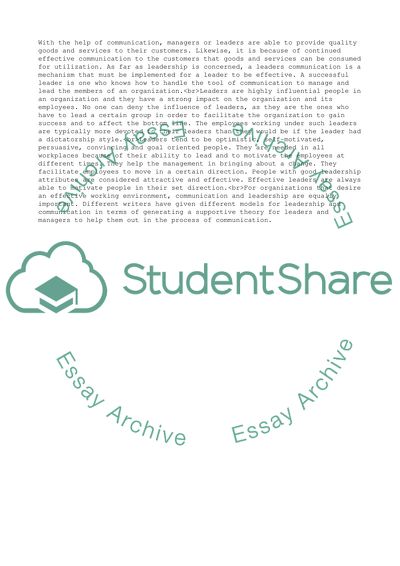Cite this document
(Role of Communication in Effective Leadership Research Paper, n.d.)
Role of Communication in Effective Leadership Research Paper. Retrieved from https://studentshare.org/management/1725703-communication-and-leadership
Role of Communication in Effective Leadership Research Paper. Retrieved from https://studentshare.org/management/1725703-communication-and-leadership
(Role of Communication in Effective Leadership Research Paper)
Role of Communication in Effective Leadership Research Paper. https://studentshare.org/management/1725703-communication-and-leadership.
Role of Communication in Effective Leadership Research Paper. https://studentshare.org/management/1725703-communication-and-leadership.
“Role of Communication in Effective Leadership Research Paper”, n.d. https://studentshare.org/management/1725703-communication-and-leadership.


